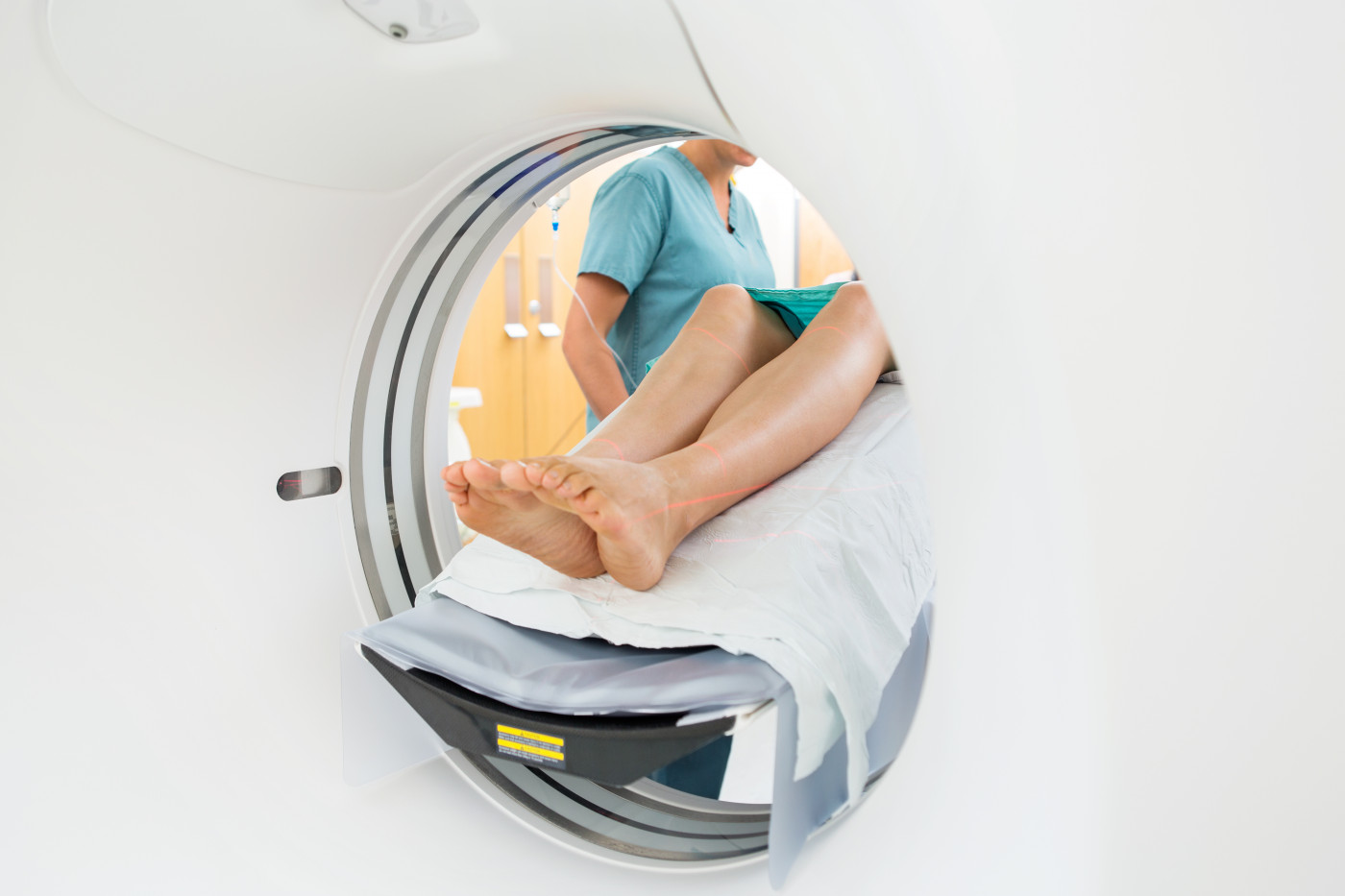Diffusion-weighted Imaging Useful to Identify Axial Spondyloarthritis

A specific type of MRI called diffusion-weighted imaging is sensitive enough to identify patients with early signs of axial spondyloarthritis, a study has f0und.
Results of the study, “Diffusion-weighted Imaging Is a Sensitive and Specific Magnetic Resonance Sequence in the Diagnosis of Ankylosing Spondylitis,” were published in The Journal of Rheumatology.
Axial spondyloarthritis (axSpA) is a type of arthritis that mainly affects the joints of the spine, causing chronic pain and lifelong physical disability. The disease can be categorized into ankylosing spondylitis (AS), when joint damage is visible through imaging techniques called radiographs (commonly called X-rays), or non-radiographic axial spondyloarthritis (nr-axSpA), when joint damage is not visible on plain-film radiographs.
“The development of magnetic resonance imaging (MRI) protocols for the diagnosis of axial spondyloarthritis (axSpA) has enabled earlier detection of disease in patients prior to the development of the radiographic abnormalities that define the development of ankylosing spondylitis (AS),” the investigators wrote.
Despite these advancements in imaging methods, the process of reading MRI scans to detect signs of axSpA prior to the development of AS lesions, remains relatively subjective and highly variable, which may be problematic.
Diffusion-weighted imaging (DWI) is a type of MRI in which researchers use water diffusion (water distribution in the tissue) as a probe to analyze the structures captured on an image. DWI has surpassed standard MRI at detecting early signs of stroke and some types of cancers. However, its diagnostic potential has never been put to the test in the context of axSpA.
In this study, investigators from the Queensland University of Technology in Australia set out to evaluate the diagnostic potential of DWI to detect early signs of axSpA and assess its usefulness as an objective measure of disease activity in AS in response to treatment with adalimumab.
The prospective study enrolled three groups of patients:
- A group of 18 AS patients who met the modified New York diagnostic criteria for AS (group 1);
- A group of 20 nr-axSpA who met the Assessment of Spondyloarthritis international Society (ASAS) diagnostic criteria (group 2);
- And a group of 20 individuals with chronic low back pain, who did not meet the standard ASAS diagnostic criteria for axSpA (group 3, control group).
Patients who met the AS criteria (those from group 1) were analyzed before and after treatment with adalimumab. All patients were evaluated using DWI, standard MRI, and conventional non-imaging measures.
Results showed that unlike non-imaging measures, the values from DWI’s apparent diffusion coefficient (ADC, a measure of water diffusion in a tissue) distinguished patients from groups 1 and 2 from those in the control group, with more than 80% of accuracy at baseline.
However, its ability to distinguish patients from group 1 before and after receiving treatment with adalimumab was lower (approximately 68% of accuracy) and similar to that obtained based on the Spondyloarthritis Research Consortium of Canada (SPARCC) scoring system.
“This study shows that DWI has excellent performance as a diagnostic tool in distinguishing axSpA from non-inflammatory causes of back pain, but performs only modestly in detecting treatment response at 13 weeks and correlates poorly with standard disease-activity measures,” the investigators wrote.
“Further studies are indicated to investigate the performance of DWI in screening back pain patients for axSpA, and in distinguishing the subset of patients with nr-axSpA who go on to develop AS,” they added.






